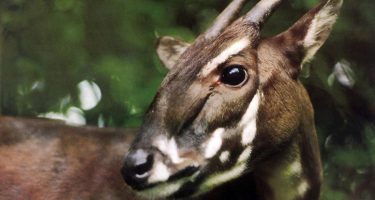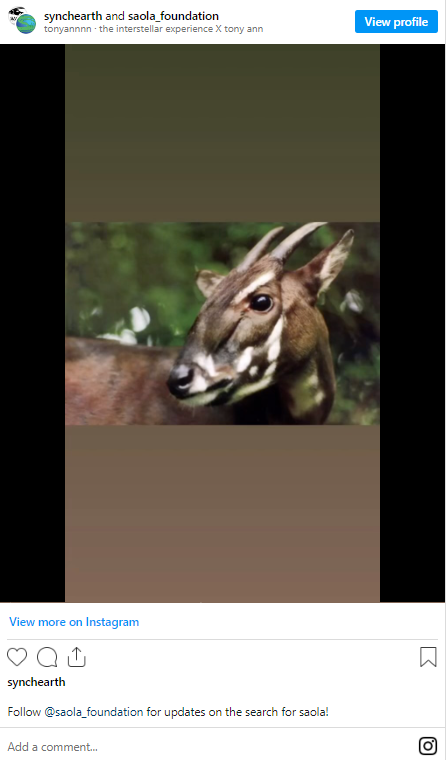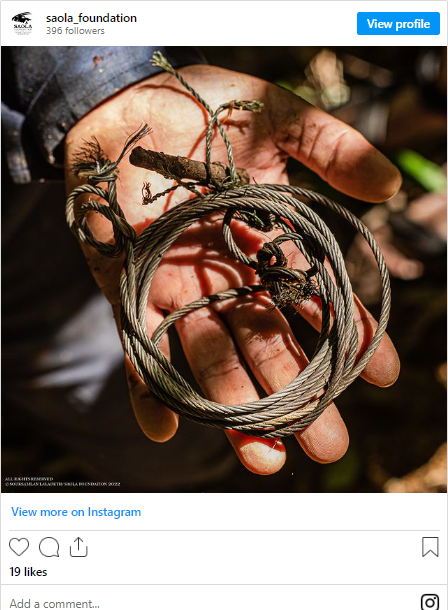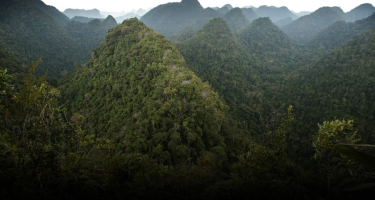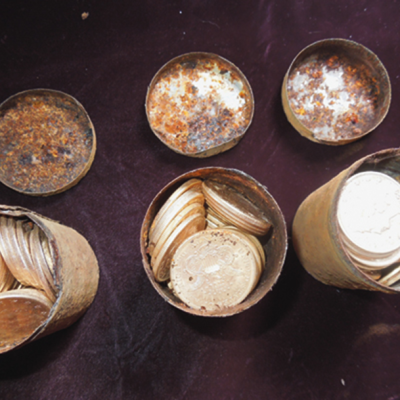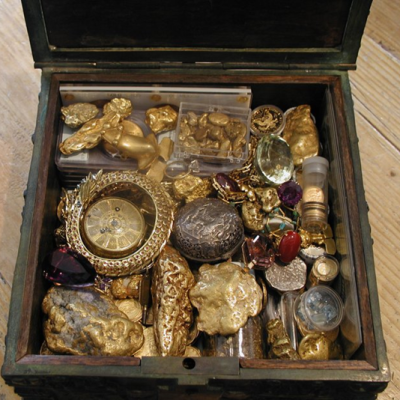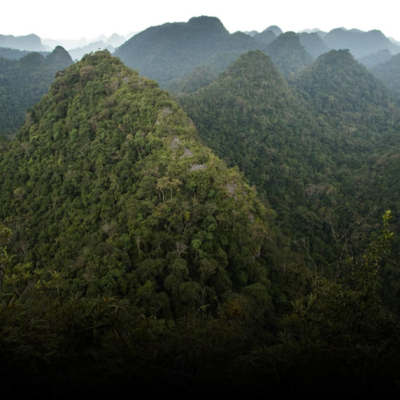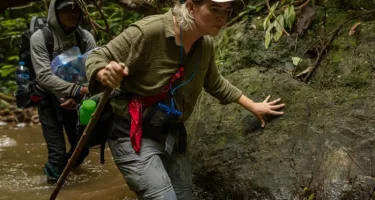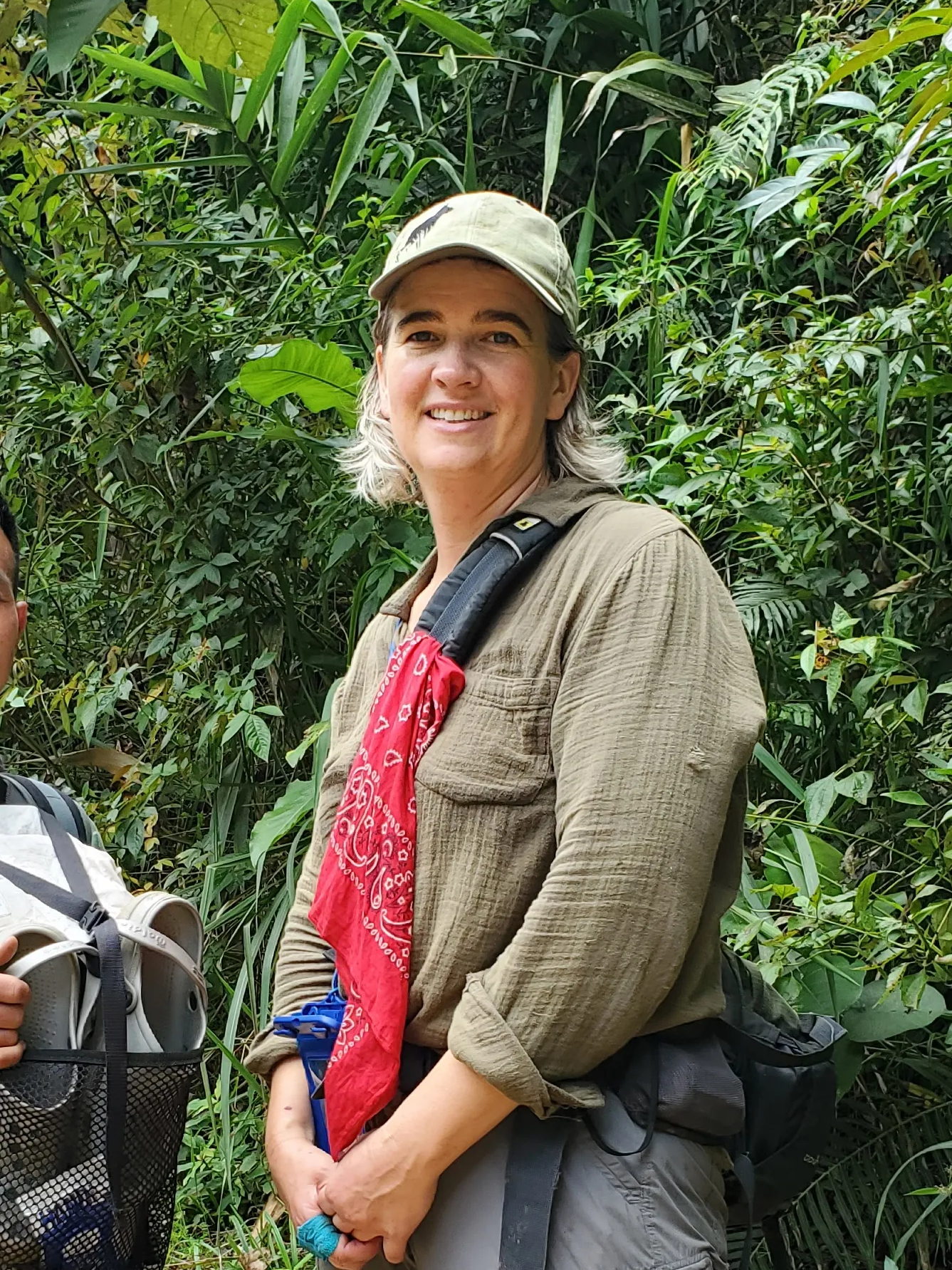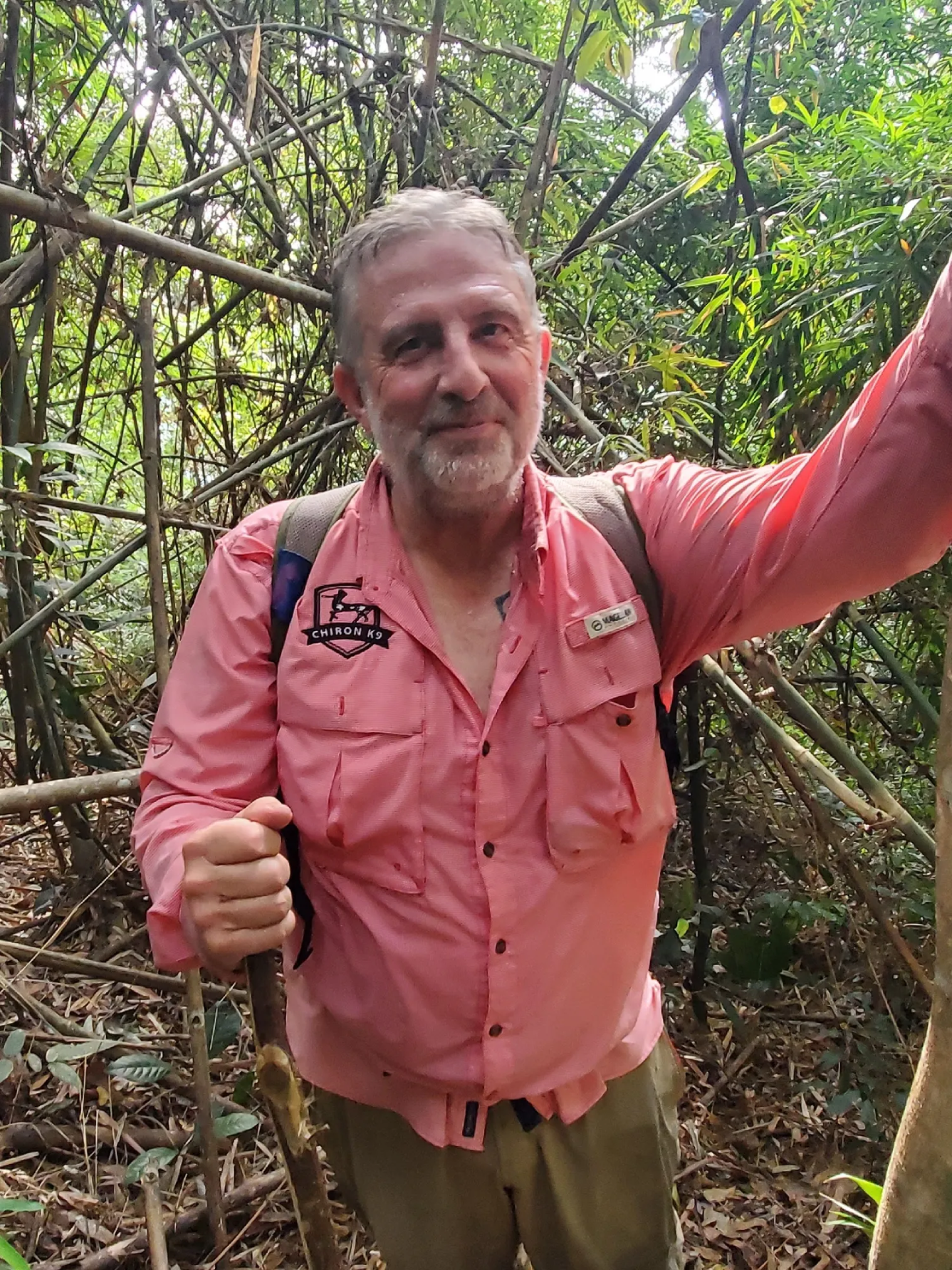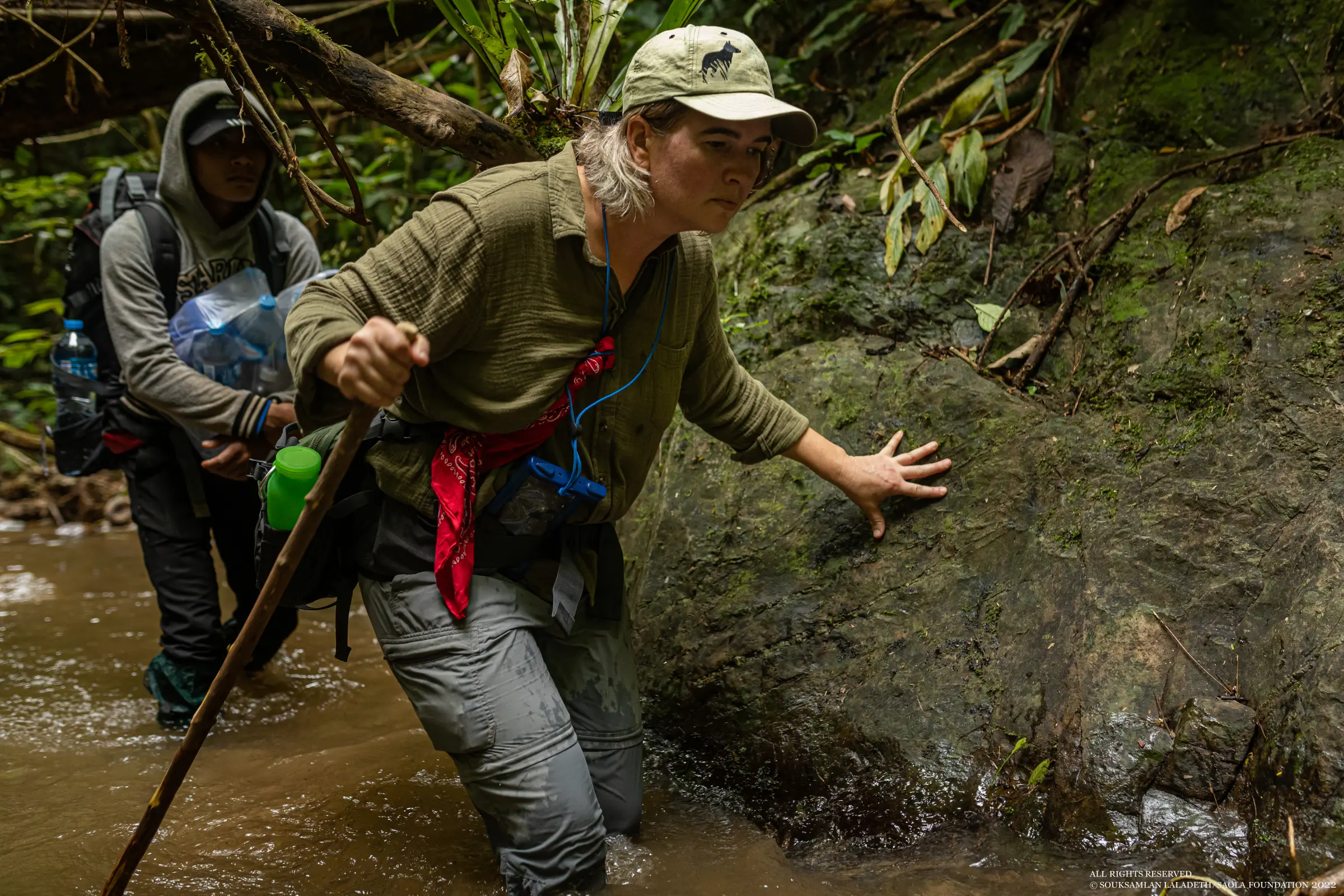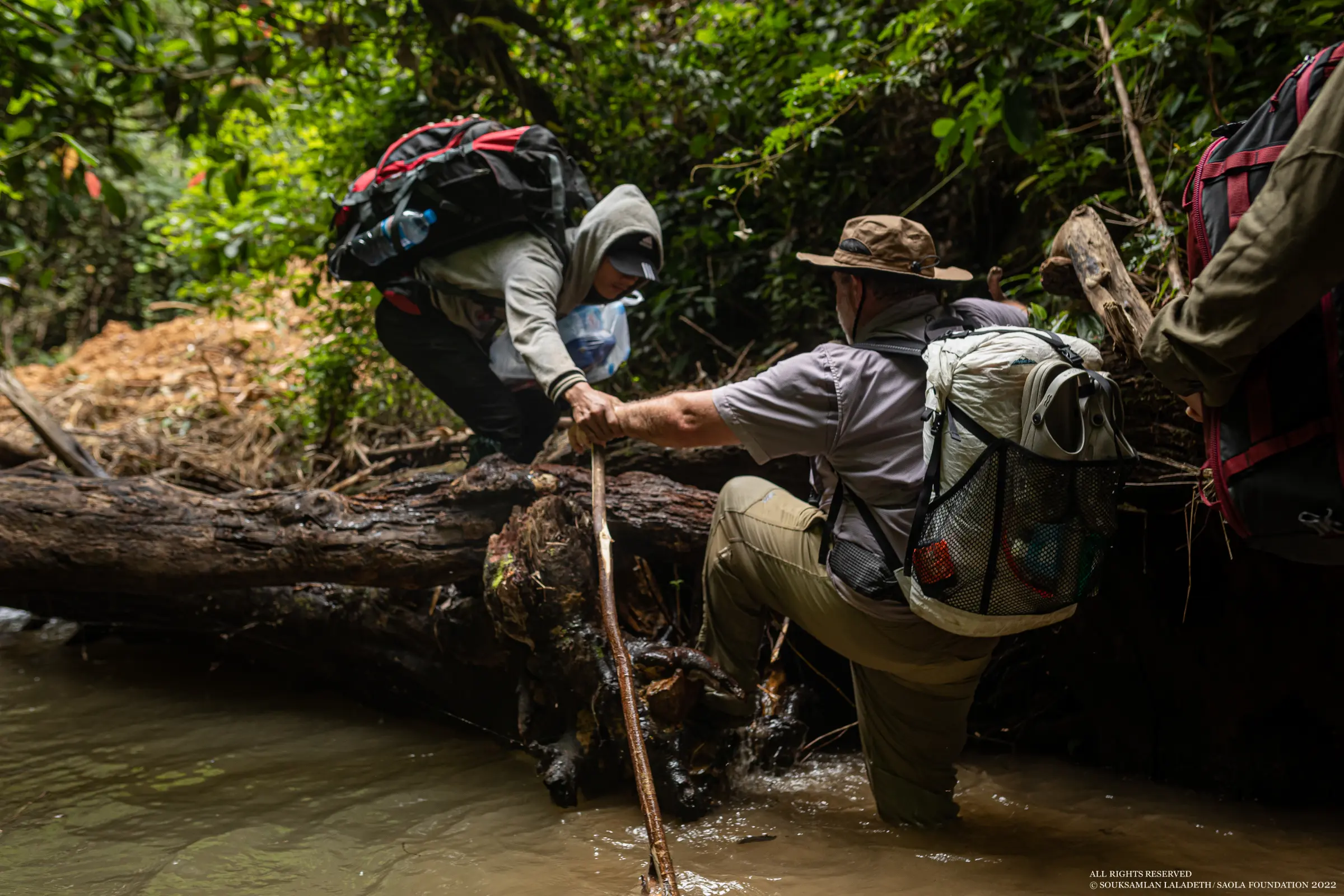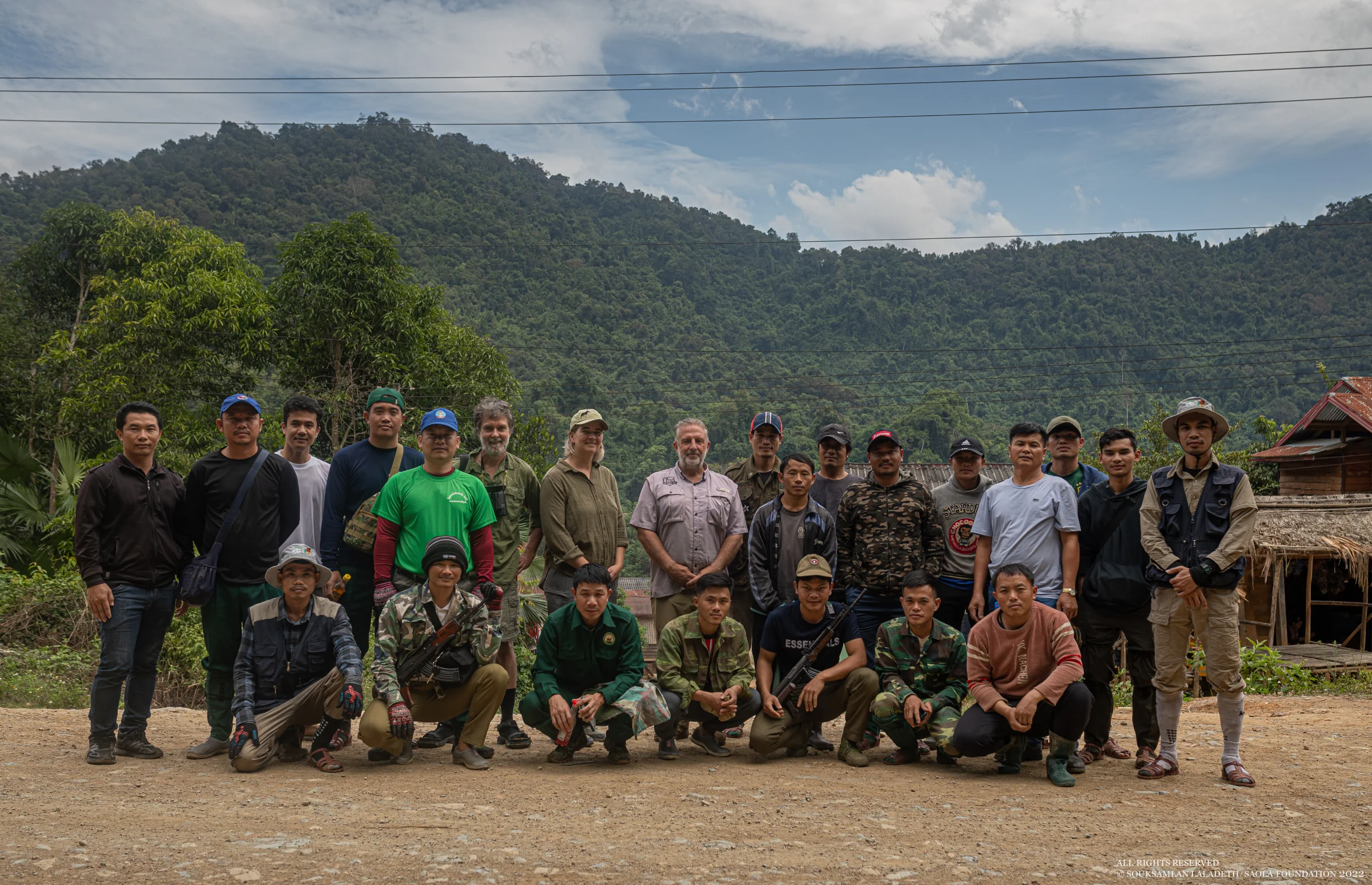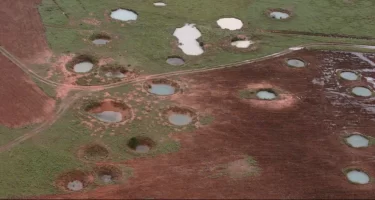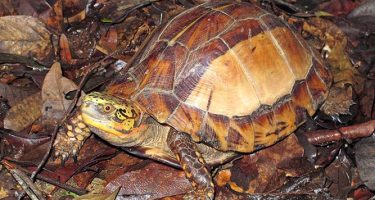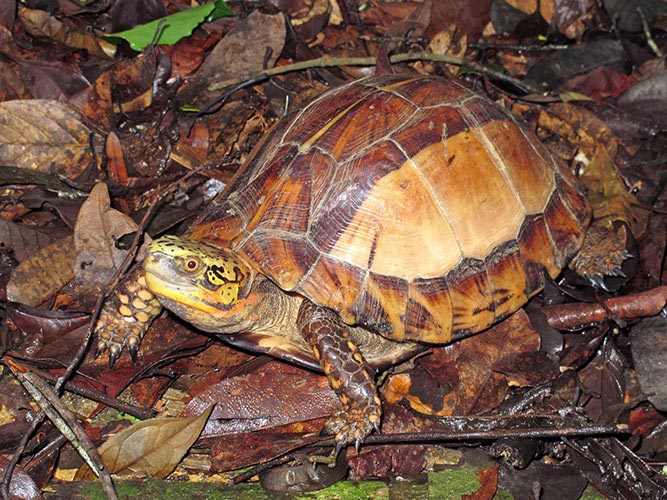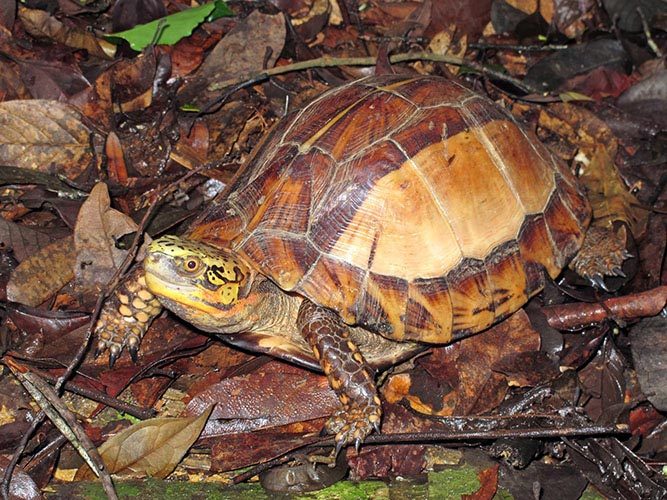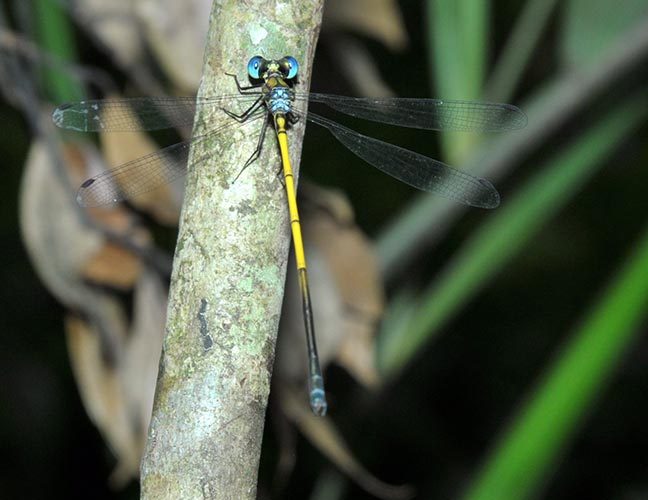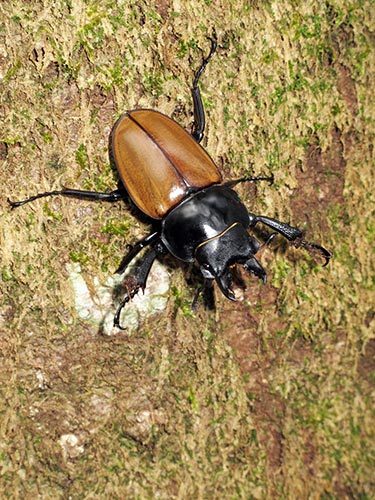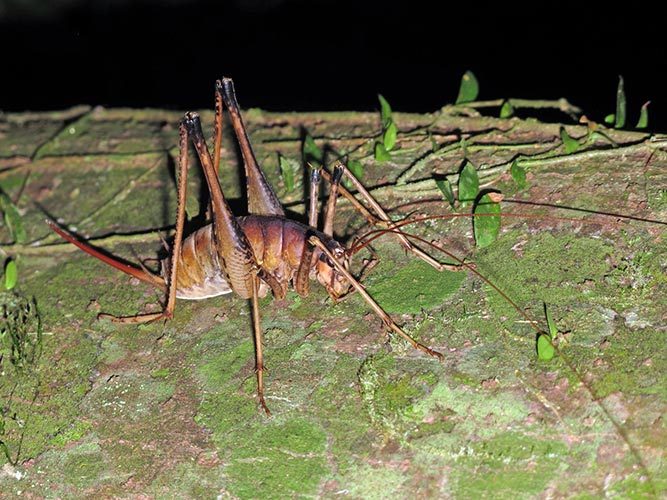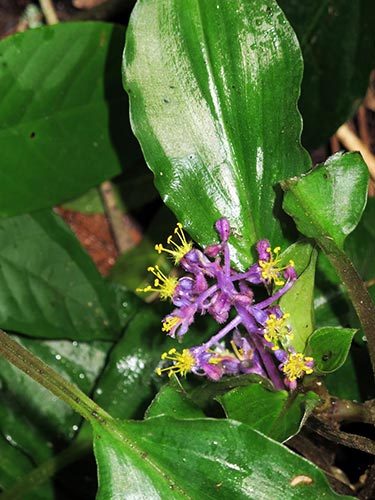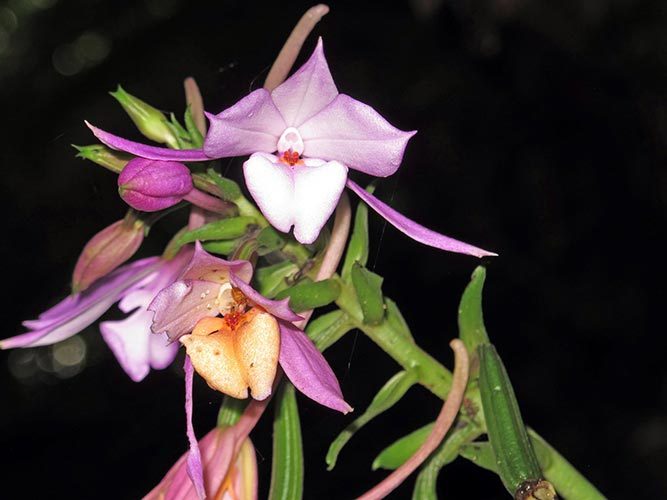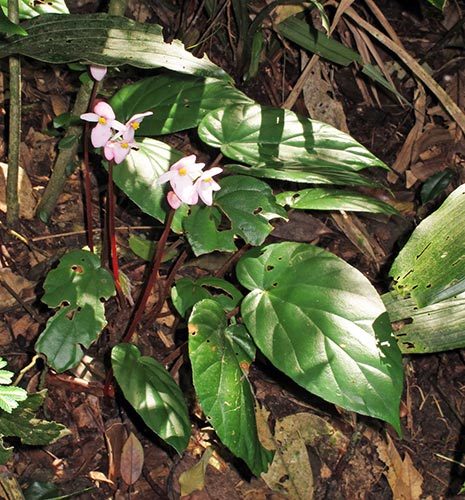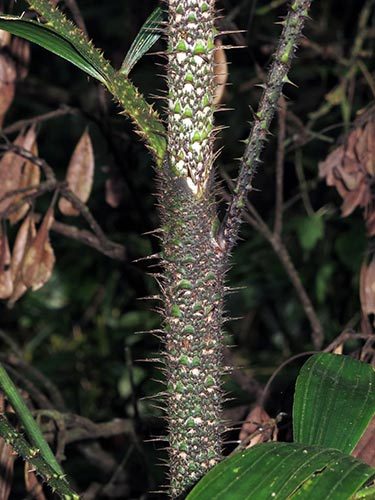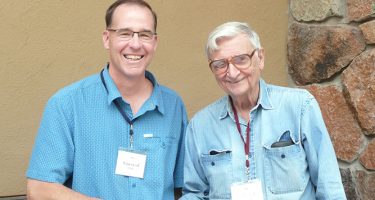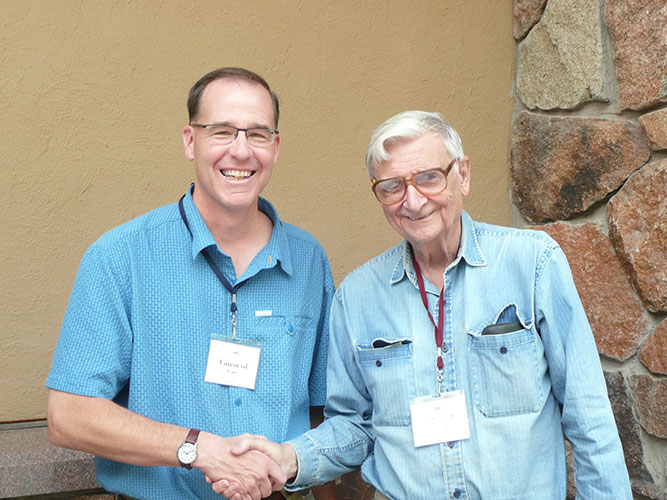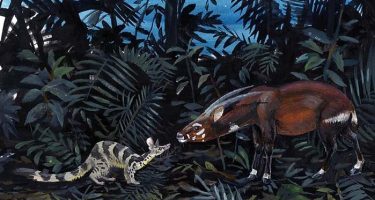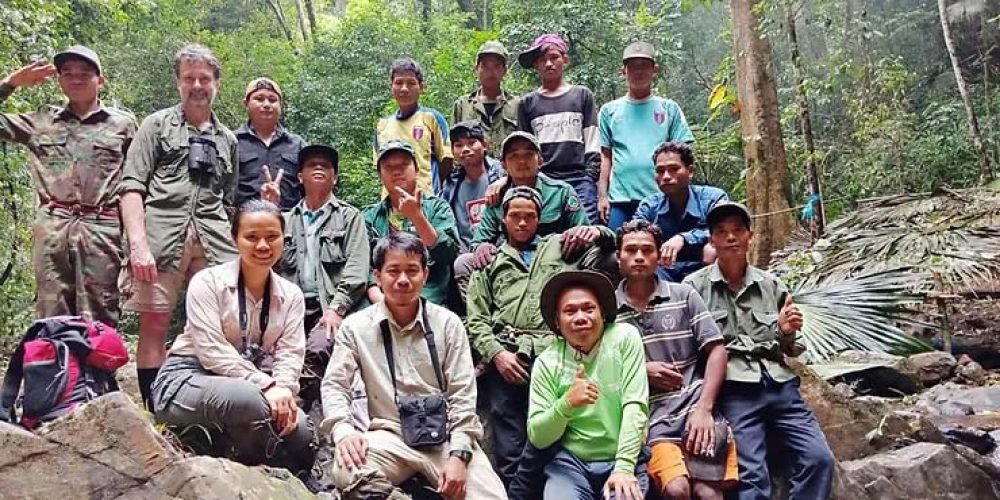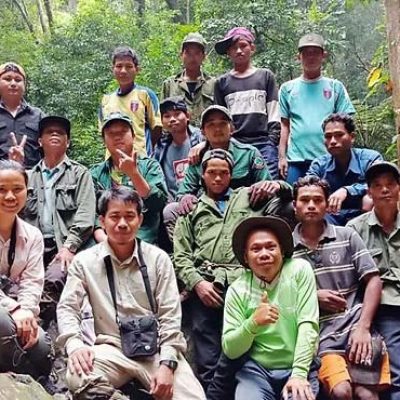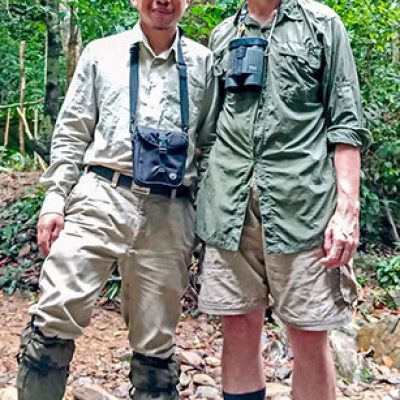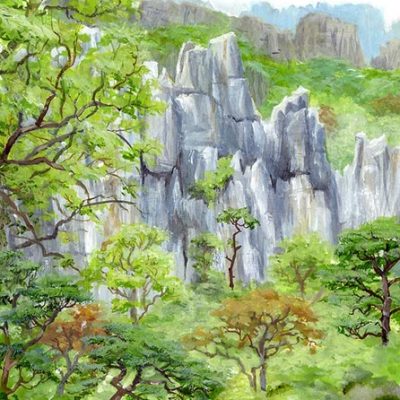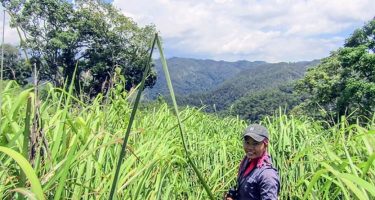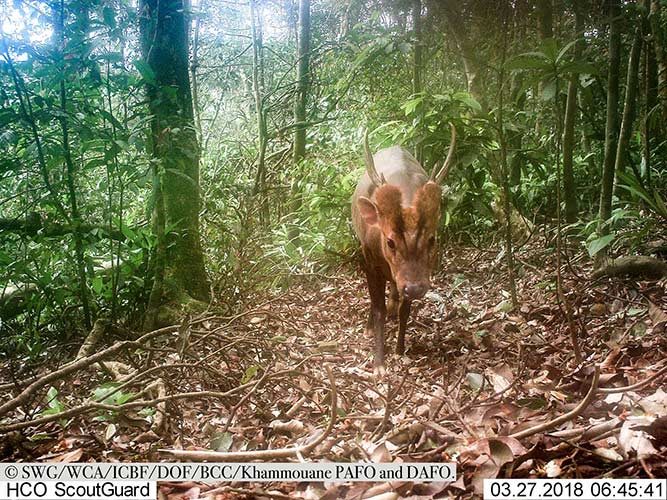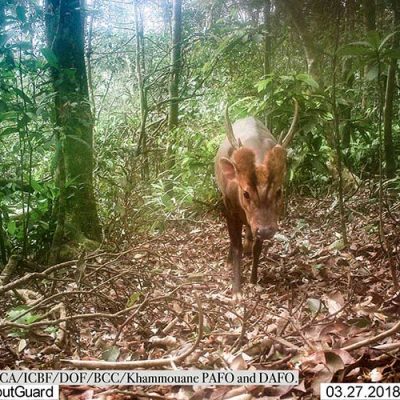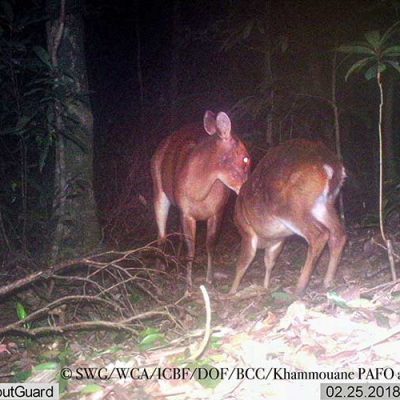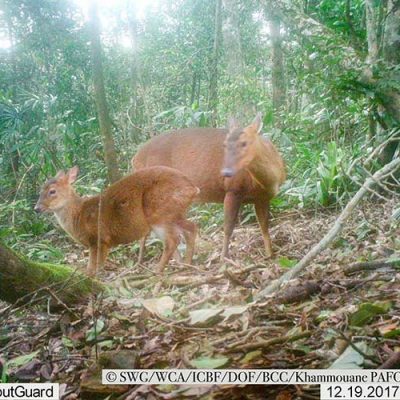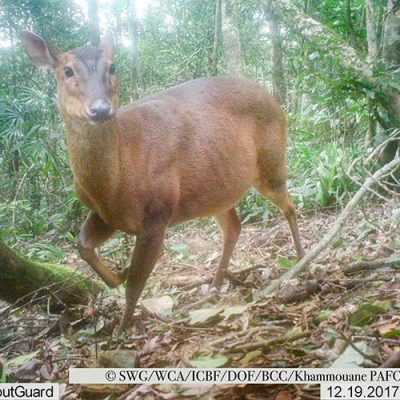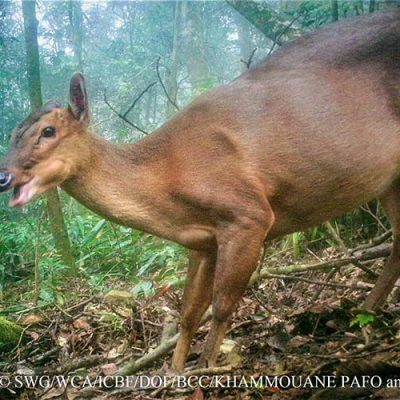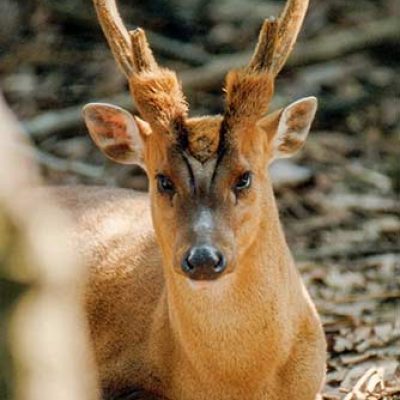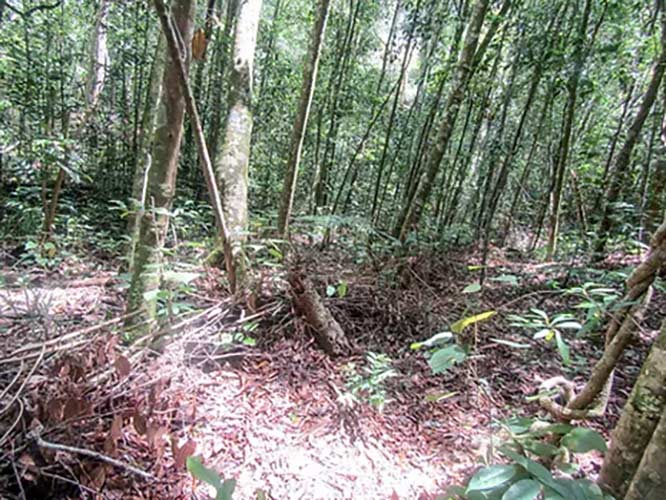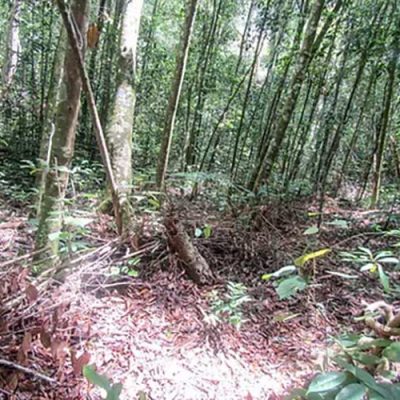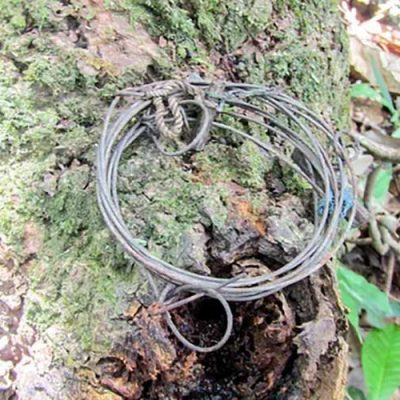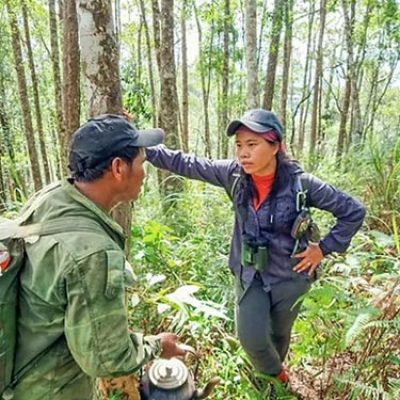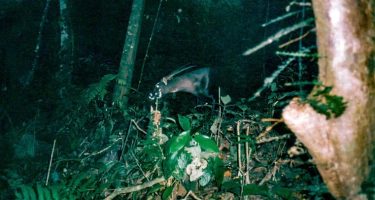The Search to Find, and Save, the Last Saola
Going all-in to find a mysterious, charismatic mammal in the mountains of Southeast Asia.
This story originally appeared on Ensia.
“I’ve seen grown men reduced to tears in the Annamite Mountains,” says wildlife biologist Lorraine Scotson of the mountain range along the border of Laos and Vietnam. “[Men] who are physically fit and really strong, adventurous types.” There’s a “claustrophobia that gets introduced” when you’re in these forest-covered mountains, she says.
“Then you’ve got the leeches and the ticks and the horseflies and all of the mosquitoes biting,” Scotson says. “It’s like the whole forest is out to get you.”
Scotson knows the Annamite Mountains well. She’s spent almost two decades in the jungles of Southeast Asia studying bears. Now, as the CEO of the Saola Foundation, she’s on a different mission in the Annamites: locate what is likely the world’s most elusive large land mammal, the saola.
Only discovered by Western scientists in 1992, the animal, which scientists believe is naturally rare and low density, has become so endangered that a tracker with the Saola Foundation, Maiy Thammanan, says few local people even know of it — though older residents are more likely to, due to “direct experience catching saola by snaring and hunting dogs.” But knowledge of the saola to the West came as a shock, akin to the finding of the okapi in 1901.
There is nothing on Earth like the saola — a true megafauna at around 200 pounds (90 kilograms), with two long curving horns up to 20 inches (50 centimeters) and striking white face markings. Superficially, it resembles an African antelope, like a bongo or an oryx. But the saola is not an antelope; instead, it’s more closely related to wild cattle. Still, it’s so distinct from every other bovid that it sits alone in its own genus, Pseudoryx.
Since 1992, the saola has only been documented a handful of times, including a couple animals briefly held in captivity and a couple others caught on camera trap. The last conclusive proof the saola still existed was in 2013 when one was photographed by a camera trap.
Now, a team of trackers with the Saola Foundation is hoping to change that. The expedition, currently ongoing in the Annamite Mountains, involves a unique pairing of high-tech and natural-tech tactics, using in-field DNA detectors, tracking dogs, and local and international experts.
A natural question to such an effort for an animal that might be extinct is: Why do it? Why put all this energy into trying to find the saola?
But for William Robichaud, co-founder of the Saola Foundation and the world’s leading expert on the animal, that’s not the right question. “Nobody ever asks the guards and the curators of the Van Gogh Museum at Amsterdam, ‘Why are you doing all this work to save [his paintings]?’” Robichaud says.
That said, the intrinsic value of the animal aside, Robichaud, who spent a brief time with a captured saola dubbed Martha before she died in 1996, notes that the foundation’s effort is about much more than the saola.
“We’re developing a field team unlike anything that’s ever been seen in Southeast Asia before. It’s extraordinary,” he says. “This approach has never been attempted before in Laos and breaks from the traditional model of relying entirely on international expertise.” He further notes that no one has combined detection dogs, professional trackers, local indigenous ecologists and field DNA tests before.
Robichaud thinks the foundation’s model could help in efforts to track other endangered species in the region, such as Edwards’s pheasant, Owston’s civet, red-shanked douc langur and the large-antlered muntjac.
“We want this team to be together for the next 20, 30, 40 years working on conservation projects in Laos, in the Annamites, and serving as a regional model for other NGOs,” Robichaud says. “We’re this tiny little saola foundation barely with two nickels to rub together, but we’re figuring out how to do this. Maybe other NGOs will take notice and start copying what we’ve done because we think it’s quite successful.”
Game Changer
One game changer in how the Saola Foundation is pursuing their quarry is a bespoke DNA field tester created by the Wildlife Conservation Society Molecular Diagnostics Lab. It’s groundbreaking because of its speed. When the team finds scat that might be from a saola — and not that of other animals in the region — they take it back to base camp to be tested, with results available in just an hour.
“It’s essentially very similar to a COVID test. The result comes back saola, not saola,” says Scotson. Prior to the new in-field DNA tester, she says, it would take months to get a result. Researchers would have to carry the sample out of the forest and transport it to a city, where they would get permission to mail it to a lab overseas. By that point, even if the test came back positive for saola, it would not be particularly useful for tracking the animal. “Without [the new] device, none of this would be possible.”
However, tracking the animal is just one of the group’s goals. That tracking will be followed by what might seem like an audacious plan for an animal that has been dubbed the “Asian unicorn” due to its nearly mythical elusiveness: starting a captive-breeding program in Laos.
“We don’t just need one saola, we need a breeding population,” says Scotson.
Capturing the animals is risky, but conservationists believe it’s the best chance to keep the saola from extinction.
The foundation is working off years of research and advocacy by the Saola Working Group, a part of the IUCN. The group’s analysis showed that the saola is likely among the most endangered land mammals on the planet and helped convince both range countries, Vietnam and Laos, that captive breeding is the best path forward to avoid the worst case scenario for the saola.
Before capture, the team must first monitor the animals to better understand their movements and needs. “The first saola will really be like the teacher and allow us to train Saola-specific dogs, learn about its behavior, movement pattern, ecology and also how to identify its tracks, because at the moment it’s mostly guesswork,” Scotson says.
Deep Habitat
Conservationists fear that snaring, which has wiped out tigers from Laos, Vietnam and Cambodia, will do the same to the saola. Hunters lay thousands of metal snares in the region that are like land mines to animals. The snares can lie in the foliage for years until something, maybe a saola, gets caught in one and dies slowly, often of thirst.
“The main problem is organized poacher gangs in Vietnam crossing the border in the forest of Laos,” says Robichaud. “They’ll set hundreds or thousands of snares. Then they go back to Vietnam for like a month or two, and then they just come back and check the snare lines.”
It doesn’t matter if the animal is rotted, Robichaud says, because the poachers are mostly looking for items valuable in Chinese medicine, such as cat bones, pangolin scales or deer antlers. They aren’t even looking for the saola.
But the Saola Foundation expedition is, and it’s not easy. “The slopes are truly steep, the forest tangled, the rocks slippery, the places where we need to go don’t have paths. Undiagnosed fevers and infections [are] a certainty,” says Rob Timmins, the technical director of the foundation.
One team member had to be evacuated with dengue fever. Another got trench foot due to the endlessly wet conditions, and a landslide split the team for a week during the rainy season. At one point even a tracking dog had to be evacuated.
“[A team member] just strapped the dog to his chest and just marched out the forest with him,” Scotson says.
Still, it’s not all unpleasant. Onkeo Khamphavongsa, another tracker, describes the joy of waking to gibbons singing every morning or encountering groups of doucs — a type of monkey — 10 to 40 strong.
The team has already taken a photo of a frog that is likely previously unknown to Western science. There have also long been rumors of a monkey that has yet to be described by Western science in the remote karsts of the Annamite Mountains, based on reports from villagers and observations from Timmins and other researchers. What’s needed now is photographic evidence.
Timmins says he thinks they could probably find a new species every day if they had a full taxonomy team.
After months of training, the team is now entering deep habitat where the forest is potentially healthy enough — and remote enough — to still contain saola. While they haven’t detected the animal yet, Robichaud says they are seeing signs of an abundance of other species that no one would have expected, including hundreds of scat and visual sightings of serow, a goat-antelope.
But the question remains: Is the saola even out there? Or has it vanished in the last 10 years? The Saola Foundation estimates that the potential habitat of the animal is the size of New Jersey, but points to an analysis that shows only about 2% of that potential habitat has been intensively, and therefore sufficiently, explored for the saola.
Robichaud, who lives in Wisconsin, points out just how stealthy even large animals can be. He says the moment hunting season starts in his home state, all of a sudden, the 1.6 million white-tailed deer that live there are almost impossible to find.
“That’s what I think about,” he says. “I can’t even find a white-tailed deer in rural Wisconsin once the hunting season starts.”
The team remains convinced the saola is still out there, its secrets waiting to be discovered and, with some luck, its future ensured. But even if the search fails and the saola has been lost to time, many other needy species await, and Robichaud expects the team’s model will be helpful in future endeavors to find and protect them.


